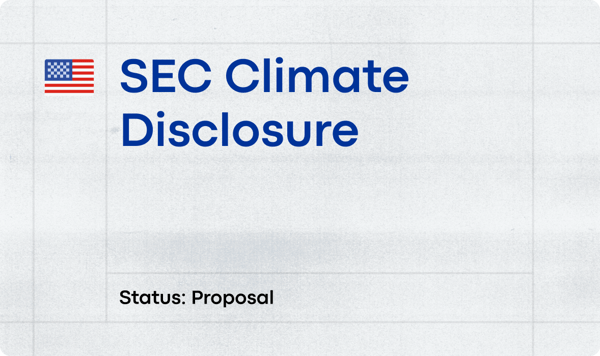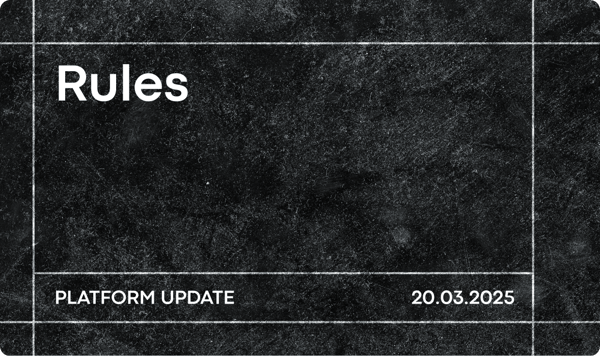The EU elections of 2024 have introduced new dynamics that could influence the regulatory landscape for textile sustainability. The election results revealed a significant win for the far right, with the center-right European People’s Party (EPP) maintaining the largest number of seats. Despite some losses, the coalition of major parties retains its majority, indicating that most members still support the European Union. This shift could lead to discussions in Parliament focusing more on business competitiveness rather than strictly on climate goals.
While many regulations were already approved in the previous term, thus limiting the immediate effect of political changes, uncertainty remains around the initiatives, which are still under negotiation.
This article will delve into the specifics of key regulations such as the Substantiating Green Claims Directive, the Waste Framework Directive, and others to forecast how they might evolve under the new parliamentary configuration. Let's unpack these developments to understand their implications for the textile industry in the EU.
Here's an overview per textile regulation:
Substantiating Green Claims Directive
The Substantiating Green Claims Directive (SGCD) is a policy proposal in the European Union that aims to ensure that companies make truthful and substantiated environmental claims about their products. The European Parliament and the Council of the European Union, which represents the member states, have agreed on their initial positions regarding this directive.
The next step is the "trilogue" discussions, which are set to begin in October 2024. These are negotiations between the European Parliament, the Council, and the European Commission to finalize the details of the directive. It's not yet decided who will lead these negotiations for the Parliament. However, the far-right political groups have not opposed or obstructed these discussions on the directive so far. This step is crucial for determining how strict and enforceable the regulations on green claims will be.
Read all about the Green Claims Directive for apparel and textile brands here.

Revision of the Waste Framework Directive (WFD)
In 2023, the European Commission proposed an amendment to the Waste Framework Directive, targeted to the textile industry. You’re likely to see the acronym EPR—short for Extended Producer Responsibility—used in reference to this directive. It contained several new rules that would “make producers responsible for the full lifecycle of textile products.” There are currently numerous EPRs in use across the different Member States, and the goal of this new regulation is to harmonize them.
These updates still need to go through a negotiation process known as the "trilogue", which is expected to start in October 2024.
The previous lead negotiator has been re-elected and will likely continue the negotiation for this directive. Before the European Parliament elections, there was significant discussion about the "Ultra-Fast-Fashion Law." During these discussions, French authorities persuaded other EU member states to support more flexibility for individual countries in adjusting fees based on environmental criteria (Eco-modulation). This flexibility is a part of the broader efforts to revise the Waste Framework Directive, which is expected to maintain strong momentum moving forward.
Read more about the Revision of the Waste Framework Directive here.
Ecodesign for Sustainable Products Regulation (ESPR)
The Ecodesign for Sustainable Products Regulation (ESPR) is a new set of rules adopted by the European Union in May 2024, focusing on making products more sustainable. Now that the regulation is in place, the Joint Research Centre (JRC) together with the European Commission is tasked with specifying the detailed technical requirements for textiles. These details are covered under what is called Delegated Acts, which are secondary legislation that provides specifics on how the primary regulation should be implemented.
Despite recent elections, it is not anticipated that these will change the way the technical requirements, such as performance standards and information disclosures, are being developed for the ESPR. The process is expected to proceed as planned, focusing on setting concrete and effective criteria for sustainability in products.
Read all about ESPR and what it means for the fashion industry here
Textile Labeling Regulation (TLR)
The Textile Labelling Regulation (TLR) is set for an update, with the European Commission planning to introduce its proposal for revising this regulation in the first quarter of 2025. This regulation deals with how textiles are labeled in the EU, providing information about material content and care instructions. Given the recent elections, it is expected that the newly elected European Parliament will focus on making these regulations more favorable to businesses.
Find an overview of global textile labeling regulations here
Corporate Sustainability Due Diligence Directive (CSDDD)
The Corporate Sustainability Due Diligence Directive (CSDDD or CS3D) is a newly established EU regulation designed to ensure that textile companies are responsible for their environmental and social impacts. Both the European Parliament and the Council have approved this directive. Now, it just needs the formal signatures of the presidents of both bodies before it can be officially published in the Official Journal of the EU, making it law.
Once the directive is published, the European Commission will create a general guidance document to help companies understand and implement the CSDDD's requirements. Following that, they will also develop guidance documents tailored to specific industries, such as the apparel and footwear sector. This entire process is expected to proceed smoothly, with no significant obstacles anticipated that would affect the implementation of the CSDDD.
Read more about the CSDDD and the fashion industry here.
Corporate Sustainability Reporting Directive (CSRD)
The Corporate Sustainability Reporting Directive (CSRD) is a regulation already passed in the European Union. It aims to improve transparency in how companies report their environmental, social, and governance (ESG) activities. Currently, individual EU member states are incorporating this directive into their own national laws, a process known as transposition.
Meanwhile, the European Commission is working on developing detailed, industry-specific standards that will clarify how companies in the fashion sector should comply with the CSRD. The recent elections are not expected to significantly affect the ongoing development of these standards. This means the process of refining and implementing the CSRD will likely continue as planned, without major disruptions.
Access a free CSRD crash course for apparel and footwear brands here .
Election Results Overview
Despite losses for the Greens and Liberals and a significant win for the far right, most Members of the European Parliament (MEPs) continue to support the European Union. Key election outcomes include:
- The coalition of major parties (EPP, S&D, Renew) retains its majority.
- The center-right European People’s Party (EPP) remains the largest group with 181 MEPs.
- Center-right parties performed well in Germany, Greece, Poland, Spain, and Hungary.
- The center-left Socialists and Progressives (S&D) are the second largest force with 135 MEPs.
- Centrist Renew Europe is the third political force with 82 MEPs, despite losses for Macron’s La République en Marche.
- Far-right groups like the European Conservatives and Reformists (ECR) and Identity and Democracy (ID) follow with 71 and 62 seats respectively.
- The Greens/EFA group secured 52 seats, facing significant losses in larger member states like Germany.
Shift in Focus: There’s a trend where discussions in the Parliament may start focusing more on boosting the competitiveness of EU businesses rather than primarily targeting the EU’s climate goals. This shift was already noticeable towards the end of the last term, as seen during debates on regulations like the Ban on Products related to Forced Labour.
Far Right's Influence: The far-right political groups have gained more seats in the Parliament. However, because of the way decisions are made in the EU, these groups will need to work with other political factions to form a majority to pass any legislation. This means they'll have to make compromises, which could dilute their influence on certain issues.
Divergent Views within Far Right: Parties within the far-right spectrum have very different views and priorities. These differing views could make it challenging for the far-right to present a united front on various issues, affecting their ability to push through their agendas.
As the new composition of the European Parliament takes shape, reconciling these varied priorities will be critical in shaping the trajectory of European governance. Finding common ground amid differing viewpoints will determine the effectiveness of EU policies and their alignment with evolving environmental goals.
Helpful resources
- Textile regulations hub - All fashion sustainability regulations at one place
- Carbonfact’s sustainability reporting software for fashion
- CSRD reporting software for apparel and footwear
10 min textile regulations crash course
Watch this course to learn everything about textile regulations in just 10 min.






 Lidia Lüttin
Lidia Lüttin


 Martin Daniel
Martin Daniel